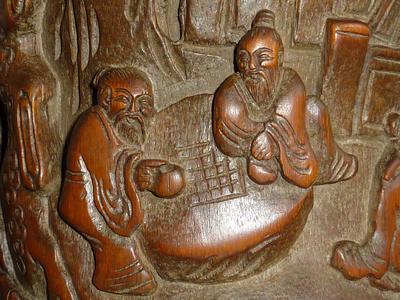Commenting is deactivated.
Please post all new topics and queries to the
Discussion Forum
Chinese brushpot bamboo
by Jesper Offersen
(England)

Dear C.A.C.P.
I read Andrew's question about age determination of brushpots and Peter's answer. Andrew spoke about varnish, I have not come across varnish for brushpots before but have wondered why some old ones (Christie's, Sotheby's) looks so shiny also where the top layer has been carved away. Others seems not varnished at all, wonder if some along the way make them "nicer" by polishing them up, you some times see stuff in the cracks, meaning perhaps it's polish build up. Well I have a brushpot myself that I like too know more about specially if the quality is good and how old age could be. Looking around I almost feel it's too well carved to be true...
Thanks in advance for any response
Jesper
Comments for Chinese brushpot bamboo
|
||
|
||
|
||
